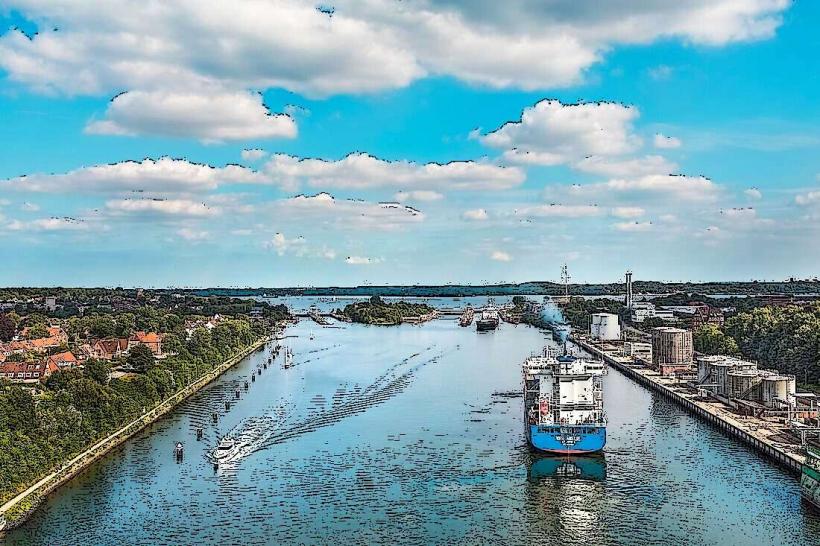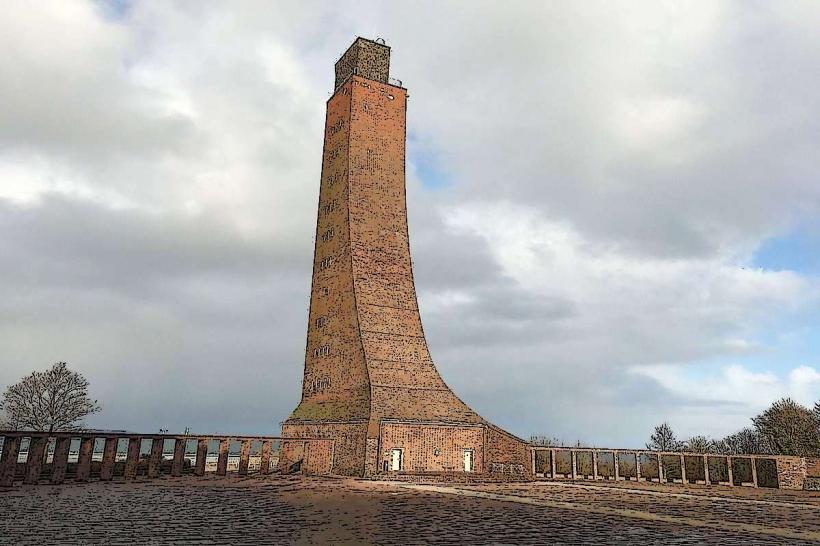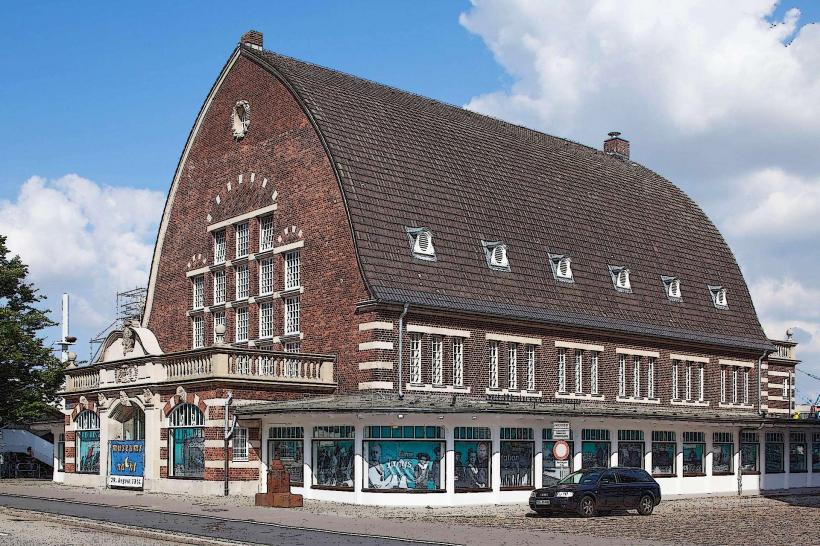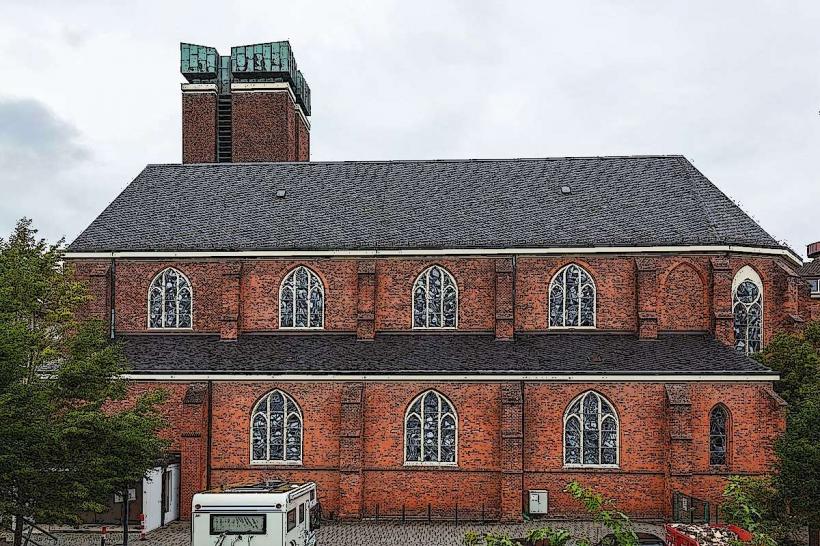Information
City: KielCountry: Germany
Continent: Europe
Kiel is a port city located on the Baltic Sea in the northern part of Germany, within the state of Schleswig-Holstein. Known for its maritime history, naval significance, and vibrant cultural scene, Kiel serves as a key city for both Germany and the Baltic region. The city is famous for its Kiel Week (Kieler Woche), the world’s largest sailing event, and has long been a hub for shipbuilding, trade, and naval activities.
1. Historical Background
- Early History: Kiel was originally founded as a settlement around the 12th century. The city's strategic location along the Kiel Fjord, which connects to the Baltic Sea, made it an ideal site for maritime trade and military defense.
- Hanseatic Influence: Like many cities in the northern region of Germany, Kiel was part of the Hanseatic League, a powerful trading coalition in the Middle Ages. Kiel’s access to the sea allowed it to prosper as a major trading port.
- Naval Significance: Kiel has been home to one of Germany’s most important naval bases. The city’s history is intertwined with military and naval affairs, and it has played a central role in various conflicts and maritime developments, particularly during the 19th and 20th centuries.
2. Maritime Heritage and Kiel Canal
- Kiel Canal (Nord-Ostsee-Kanal): The Kiel Canal, completed in 1895, is one of the most important artificial waterways in the world, linking the Baltic Sea to the North Sea. This canal provides a shortcut for ships traveling between the two seas, bypassing the need to navigate around the Jutland Peninsula. Visitors can watch large ships passing through the canal and visit the Kiel Canal Visitor Center to learn about its history and operation.
- Kiel Harbour: Kiel's harbor has been at the heart of its maritime identity for centuries. The city is an important hub for international shipping, and its docks are still used for passenger ferries and freight transport. The harbor area has a vibrant waterfront, with marinas, piers, and promenades, as well as views of the Baltic Sea and the ships that dock there.
3. Kiel Week (Kieler Woche)
- Largest Sailing Event in the World: Kiel Week, or Kieler Woche, is the city’s most famous annual event. Held every summer, it attracts sailors, boaters, and tourists from all over the world for a week of competitive sailing, cultural activities, and festivities. The event includes regattas, concerts, exhibitions, and fireworks, and the city’s waterfront is transformed into a lively area filled with activities, food stalls, and entertainment.
- Cultural and Musical Events: In addition to the sailing competitions, Kiel Week features a wide range of cultural events, including performances by international musicians, local theater productions, and a bustling market. The festival is one of the largest maritime events globally and significantly boosts tourism in the city.
4. Architectural and Historical Sites
- Kiel Rathaus (Town Hall): The Kiel Rathaus is an impressive building located in the heart of the city. Built in a Neo-Renaissance style, the town hall dates back to the late 19th century and serves as a symbol of the city’s importance and growth during that period. Visitors can admire its ornate architecture and the historic council chambers.
- St. Nicholas' Church (Nikolaikirche): St. Nicholas’ Church is one of Kiel’s most important historical churches. Built in the early 14th century, the church features a Gothic architectural style and is known for its stunning interior, which includes intricate wood carvings and beautiful stained-glass windows. The church is an active place of worship and also hosts cultural events and concerts.
- Schleswig-Holstein State Museum (Kunsthalle Kiel): The Kunsthalle Kiel is the city's major art museum, with collections spanning from medieval to contemporary art. The museum features German Romanticism, Impressionist, and Modernist works, and has rotating exhibitions showcasing artists from Germany and beyond.
5. Parks and Green Spaces
- Schrevenpark: Schrevenpark is a popular green space in the center of Kiel, offering a large park area for outdoor activities. The park features a beautiful lake, walking paths, and plenty of space for picnics or relaxing. It’s a popular spot for both locals and visitors to enjoy the outdoors.
- Hohenwarte Park: This large, well-maintained park offers stunning views of the Baltic Sea and the city. The park is home to a variety of trees, open lawns, and walking paths, making it ideal for a peaceful stroll. There are also several cafes in the area, providing a perfect spot to relax.
- Botanical Garden Kiel: Managed by the University of Kiel, the Botanical Garden is a beautiful green space showcasing a wide range of plants from all over the world. The garden has thematic areas such as the rock garden, tropical greenhouse, and medicinal plant section, making it an educational and relaxing destination for nature lovers.
6. Museums and Cultural Institutions
- German Maritime Museum (Deutsches Schiffahrtsmuseum): The German Maritime Museum in Kiel is dedicated to the city’s rich maritime history. The museum features exhibits on shipbuilding, navigation, and the role of the Kiel Canal in international trade. It also has a significant collection of ship models, historical maps, and artifacts related to the sea.
- Kiel Naval Memorial (Marine-Ehrenmal Laboe): Located just outside Kiel, the Naval Memorial in Laboe is a monument to German sailors who lost their lives in both World Wars. The memorial includes a U-boat that visitors can tour, and the site offers impressive views over the Baltic Sea.
- City and Maritime Museum Kiel (Stadt- und Schifffahrtsmuseum): This museum tells the story of Kiel’s history, focusing on its maritime heritage and role as a naval and trade center. It features exhibits on shipbuilding, Kiel's involvement in the Hanseatic League, and the city’s transformation into a major port.
7. Shopping and Dining
- Kiel’s Old Town (Altstadt): Kiel’s Old Town is a charming area to explore, with its narrow streets and historical buildings. It is home to a variety of shops, boutiques, cafes, and restaurants, where visitors can enjoy local specialties and shop for unique goods.
- Holstenstraße: Holstenstraße is the city’s main shopping street, lined with both international retailers and local stores. It’s a bustling area with a mix of modern shopping malls and traditional buildings.
- Local Cuisine: Kiel, with its maritime traditions, offers plenty of fresh seafood. Popular dishes include smoked fish, herring, and Kieler Sprotten (small smoked fish). Labskaus, a traditional sailor’s dish made with corned beef, potatoes, and herring, is another regional specialty.
- Kieler Bier: The region is known for its beer, and several local breweries produce traditional Kieler Bier. Visitors can sample these local brews in one of the many pubs and beer gardens around the city.
8. Beaches and Waterfront
- Schilksee Beach: Kiel is home to several beaches, with Schilksee being one of the most popular. Located just a short drive from the city center, this beach is known for its sandy shores and clean waters, making it perfect for swimming, sunbathing, and water sports.
- Hauptstrand: The main beach in Kiel is easily accessible from the city center and is a popular spot for families and tourists in the summer months. The beach has ample facilities, including cafes, restaurants, and places to rent beach equipment.
- Ostseekai: The Ostseekai is the port area where large ferries dock, including those traveling to Scandinavia. The promenade is great for walking, offering scenic views of the harbor and the ships coming in and out.
9. Festivals and Events
- Kiel Week (Kieler Woche): As mentioned earlier, Kiel Week is the city’s most famous event, attracting visitors from all over the world. During this festival, the city comes alive with cultural activities, international food stalls, concerts, and world-class sailing events.
- Kieler Opernfest: The Kiel Opera Festival is a well-established event that showcases classical opera performances, attracting opera lovers from across the world. The performances are often held in various venues around the city, including the Kiel Opera House.
10. Transportation and Accessibility
- Public Transport: Kiel is well-served by public transportation, including buses, trams, and regional trains. The city’s central station (Kiel Hauptbahnhof) connects Kiel to major German cities such as Hamburg and Berlin. The Kieler Förde is also serviced by ferries connecting Kiel with nearby Scandinavian countries and cities.
- Cycling: Kiel is a bike-friendly city, with many cycle paths that connect key areas of the city, including the waterfront, parks, and the city center.
- Proximity to Other Destinations: Kiel’s location on the Baltic Sea makes it a great base for exploring nearby coastal areas, including the islands of Fehmarn and Rügen, and cities such as Lübeck and Hamburg.
Conclusion
Kiel is a city that beautifully blends its maritime heritage with modern-day culture. Whether you’re exploring the historic Old Town, enjoying a day at the beach, or taking part in the excitement of Kiel Week, the city offers a diverse range of activities for visitors. Its rich naval history, stunning waterfront, and vibrant festivals make Kiel a unique and engaging destination in northern Germany.





